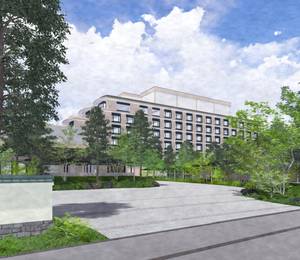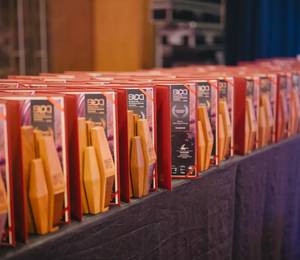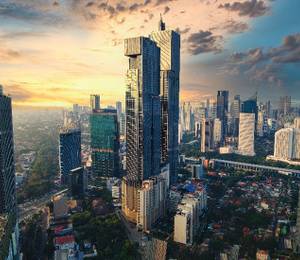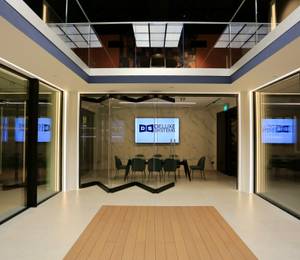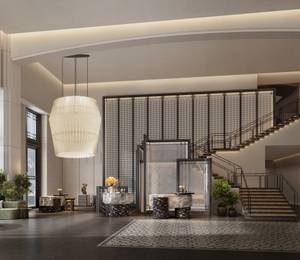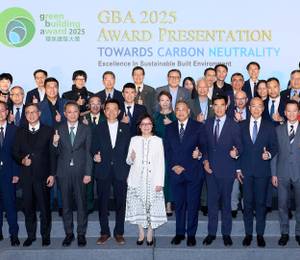Taiwan’s collateral event at the Biennale Architettura 2025, “NON-Belief: Taiwan Intelligens of Precarity”, was officially inaugurated on May 8, marking the nation’s presence at the prestigious international architecture exhibition.
The opening ceremony was graced by Ching-Hwi Lee, Deputy Minister of Culture; Amb. Vincent Tsai, Representative of the Taipei Representative Office in Italy; Riccardo Tsan-Nan LIN, Director of the Taipei Representative Office in Italy-Milan Office; Kuang-Yi Chen, Director of the National Taiwan Museum of Fine Arts (NTMoFA); jury members Prof. Kwang-Tyng Wu and Jr-Gang Chi; Ping-Sheng Wu, Senior Vice President of National Cheng Kung University (NCKU); and the curatorial team led by Cheng-Luen Hsueh, Sung-Chang Leo Chiang, and Meng-Tsun Su.
Distinguished guests at the opening ceremony included Deborah Onisto, Vice President for International Relations and Cultural Promotion, City of Venice; Paolino D’Anna, Paolino D’Anna, Councillor of the Venice City Government; Marco Bordin, Head of Municipal Development for the City of Venice; Stefano Bellato, President of the Association of Artists; Brian McGrath, Professor at Parsons School of Design in New York; Fabrizio Gallanti, Director of the Arc en Rêve Centre d’Architecture in Bordeaux; Wen-Wen CAI, curator of the Arc en Rêve Centre d’Architecture in Bordeaux, Yun Fu, Assistant Professor at the Harvard Graduate School of Design; as well as curators and participants from national pavilions representing Singapore, Thailand, Hong Kong, Kuwait, Croatia, and others.
The Deputy Minister of Culture, Ching-Hwi Lee, remarked that Taiwan is an island rich in architectural energy.
The Taiwan Collateral Event has consistently been held at the Palazzo delle Prigioni for many years. The Ministry of Culture is actively working towards establishing the Taiwan Architecture & Cultural Centre in 2026, which will be the first national institution dedicated to architecture in Taiwan. It is envisioned as a hub for architectural research, curation, and educational outreach, where systems of knowledge will be integrated internally and strong international connections will be established.
Last year, Taiwan also signed a Memorandum of Understanding with the Arc en Rêve Centre d’Architecture in Bordeaux, demonstrating Taiwan’s proactive engagement in bringing Taiwanese culture to the international stage and laying the foundation for future long-term collaborations. Through curatorial exchanges, professional interactions, and joint educational programmes, Lee expressed the hope of building an architectural culture platform that is uniquely Taiwanese and shared with the world.
Curator Cheng-Luen Hsueh began his speech by expressing gratitude to all participants, noting that the 17 proposals in this exhibition each explored the resilient wisdom Taiwan offers in an uncertain world, particularly through an “in-between” state. He introduced the concept of [non] as a framework for presenting and sharing Taiwanese architecture on the international stage. Hsueh believes that Taiwan’s architectural perspective emerges from the island’s unique condition of vulnerability and precarity, giving rise to a distinct architectural intelligence. Within this small island nation, the belief in [non] has helped to shape a collective sense of home. Through an exhibition space defined by “in-between,” he envisions the construction of new global imaginaries rooted in Taiwan’s architectural vision and an educational approach that thrives at the margins.
Grounded in the Biennale’s central theme, “Intelligens. Natural. Artificial. Collective.”, “NON-Belief: Taiwan Intelligens of Precarity” builds on existing historical contexts to re-examine the notion of Taiwan’s “precarious intelligens”—a distinctive resilience emerging from the ambiguous intersection of unpredictable natural disasters, geopolitical tensions, globalisation, and an uncertain future.
The design of the exhibition space embraces the concept of an “island” as a central theme. At its heart lies a “TECH-island” installation that showcases looping images of Taiwan’s landscape on E Ink electronic paper screens, illustrating the impacts of technological developments on the island’s environment. Surrounding the exhibition space, each architectural proposal is displayed through models, accompanied by research booklets or QR codes linking to videos, offering audiences an opportunity for deeper exploration. Another highlight is the installation Votive Lamp Wall, which comprises various votive lamps featuring deity figures prominently displayed in the front. In contrast, the back of the installation is covered with circuit boards containing glowing chips and wires, symbolising the evolution of traditional faith toward a technology-mediated future.
The Taiwanese exhibition garnered significant attention on its preview day, 8 May 2025, welcoming curators and participants from numerous national pavilions, alongside a strong contingent of international media.
The day also saw the successful execution of three engaging international forums: “Town and Gown”, moderated by Dr. Hui-chen Su, Chairperson of the NCKU Research and Development Foundation, which explored the nexus of higher education and industrial innovation; “Inhabiting Taiwan’s Geopolitics Through Moving Images”, led by director Sung-Chang Leo Chiang, examining the relationship between film and Taiwan’s geopolitical context; and “Curating Precarity - Museum of the Future”, hosted by Professor Chun-hsiung Wang from the Department of Architecture Design at Shih Chien University, focusing on Taiwan’s architectural museum landscape and curatorial practises. All three forums fostered lively discussions and enthusiastic participation.
On May 9, Cheng-De David TSENG, Professor of the Department of Architecture of National Cheng Kung University, hosted a forum titled “Navigating Precarity and Global Flux”, bringing together renowned architects from Taiwan and abroad, followed by a guided tour of the exhibition led by the curators.


